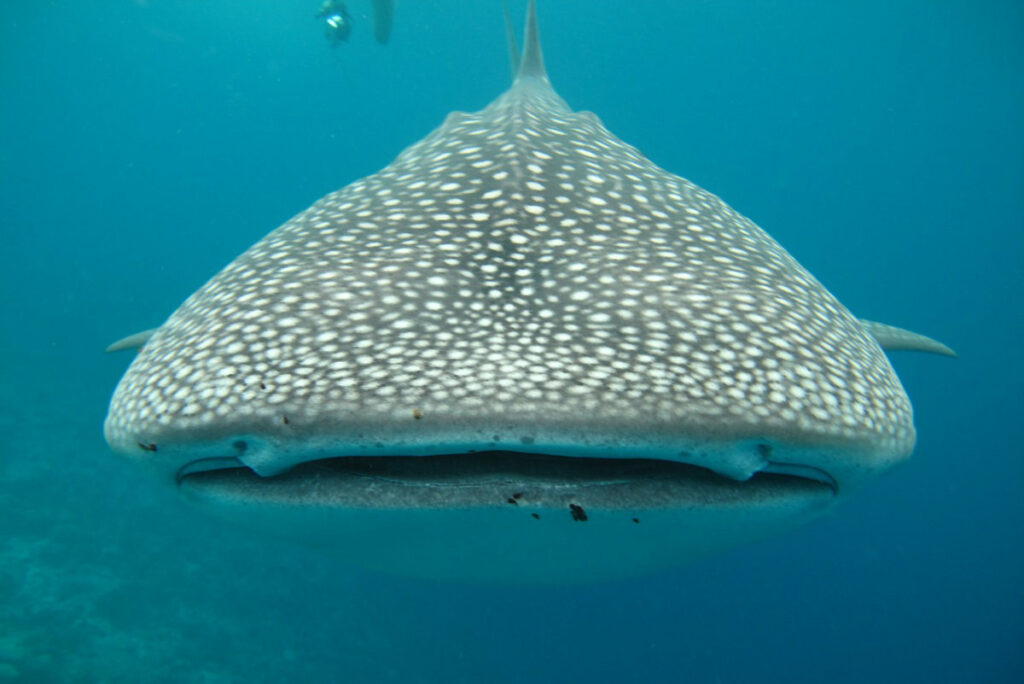One of the great underwater experiences has to be diving with whaleshark – the ocean’s gentle giant.
The largest fish in the world, and one of the most majestic marine creatures, having the opportunity to get up close as they glide by really is bucket-list stuff.
Guests on our itineraries in The Maldives often get the privilege of seeing these greats of the sea and it is a highlight of any trip when you do. I mean, a shark that could potentially be up to 20 metres long? Who wouldn’t want to add that to their ‘spotted’ list.
Easily recognisable due to their massive size, wide mouths, and distinctive pattern of white spots and stripes on a dark grey background, whaleshark are fascinating beasts.
They are filter feeders and eat plankton, small fish, and squid by sucking in volumes of water and filtering out their food. This feeding method is one of the reasons they frequent the plankton-rich waters of The Maldives.
We also know that each shark has a unique pattern on its skin, much like human fingerprints, and these markings can be used by researchers to identify individual sharks.
However, there is also so much we still don’t understand or haven’t found out about them.
They are migratory and have been known to travel great distances across the oceans. But the reasons for their migration are not entirely clear. Breeding, birthing, and feeding all play a role in their patterns and the fact they are in the Maldives throughout the year suggests the region is a critical feeding area for them.
Their breeding process also remains largely mysterious due to their elusive nature and deep-sea habitat. It is known they are ovoviviparous, meaning the females produce eggs that hatch inside her body. She then gives birth to live young, called pups.
Mating is rarely observed, but it is believed to occur primarily in warm, tropical waters. After mating, the female can retain sperm and produce multiple batches of pups over time. Gestation periods are speculated to be lengthy, potentially up to a year, resulting in the birth of hundreds of pups.
Yet despite the ability to produce a large number of offspring (they give birth to up to 300) and live long lives, the whaleshark is still considered endangered.
Of the pups born only 1 in 10 are expected to survive and reach maturity, which happens relatively late in life at the age of around 30.
And although they capable of living for anything between 70 and 100 years – and some up to 150! – issues such as climate change and irresponsible fishing practices are having an effect.
Which makes it even more special when you watch in awe as a shark over 12 metres long slowly swims past within touching distance, unconcerned and unperturbed by your presence, providing a memory that will stay with you forever.
Large, majestic and still fascinating scientists and divers alike – the wonderful whaleshark.
Find out more about our amazing Maldives itineraries and how you can book your trip to this stunning part of the world.

